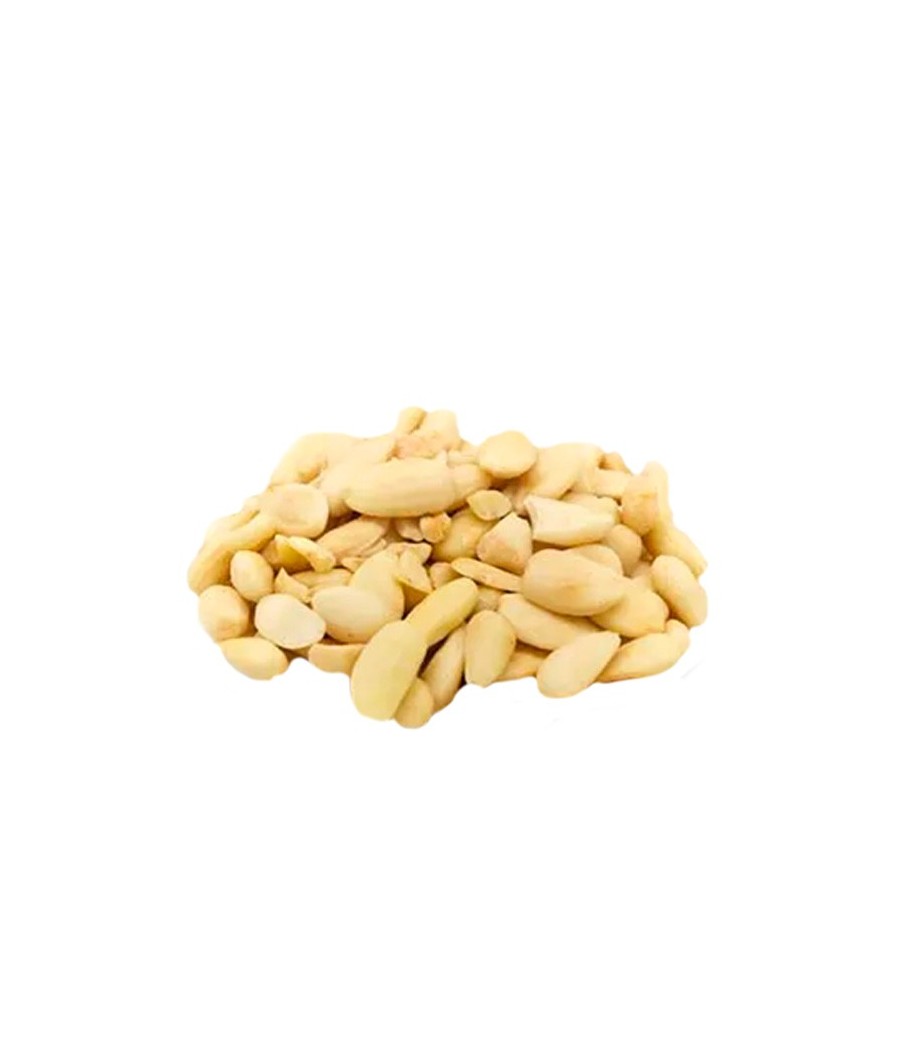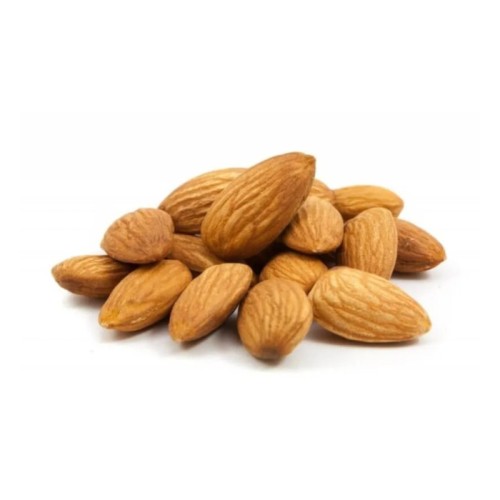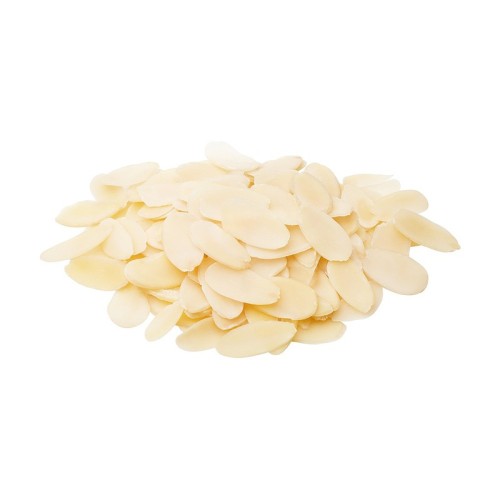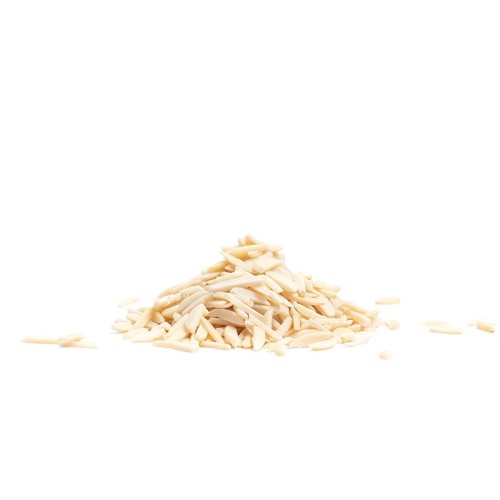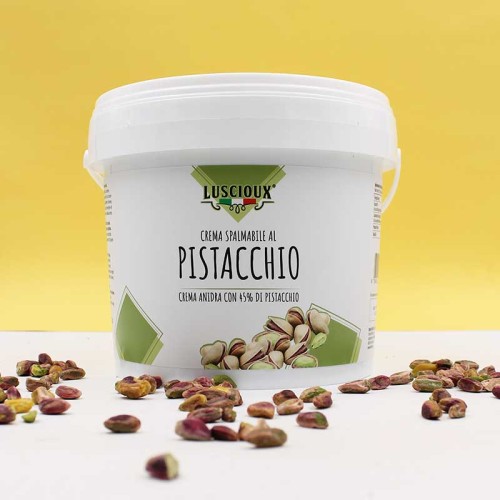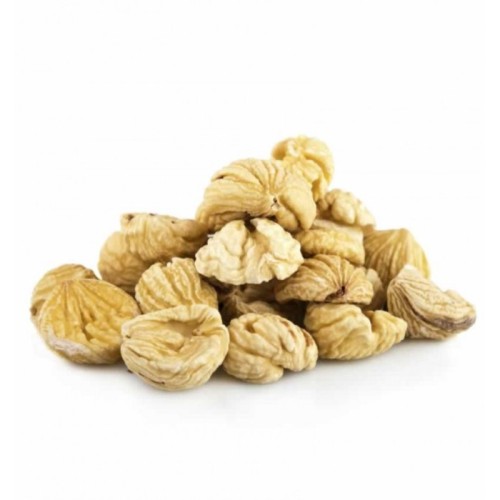Peeled Broken Almonds
(€11.88 Per Kg)
Peeled broken almonds, an affordable yet high-quality ingredient, perfect for baking and pastry applications.
 Security policy
Security policy
Transparency and reliability - Encrypted information (SSL Certificate)
 Delivery policy
Delivery policy
Fast shipping with delivery in 1- 4 working days.
 Return policy
Return policy
24/7
Peeled Broken Almonds – Affordable Quality for Baking and Pastry Creations
Our peeled broken almonds are a cost-effective solution for the baking and pastry industry, offering the same high-quality characteristics as whole peeled almonds. They are ideal for:
- Adding texture and flavor to cakes, cookies, and desserts
- Creating almond-based fillings, marzipan, or nougat
- Garnishing pastries and baked goods
Why Choose Peeled Broken Almonds?
- Cost-Effective: More affordable than whole almonds, reducing production costs.
- Same Quality: Maintains the same nutritional and flavor profile as whole peeled almonds.
- Versatile: Perfect for recipes where appearance is secondary to taste and performance.
Data sheet
- Product
- Almonds
Specific References
- ean13
- 8054134419599
Nutritional values
| Ingredients | ALMONDS. May contain traces of PEANUTS and other NUTS. |
| Nutrition declaration | average values per 100 g: |
| Power | 2528kJ / 612kcal |
| Fats | 53g |
| of which saturated fatty acids | 4.1g |
| Carbohydrates | 2.2g |
| of which sugars | 2.0 g |
| Fibers | 11 g |
| Protein | 26 g |
| Salt | 0.09g |
| Phosphorus | 591 mg (84% NRV*) |
| Copper | 1.0 mg (100% NRV*) |
| Manganese | 2.0 mg (100% NRV*) |
| Directions | The advice given IS NOT IN ANY WAY TO BE CONSIDERED OF MEDICAL/PRESCRIPTIVE VALUE. The information provided is for informational and informative purposes only, therefore they are not intended in any way to replace medical advice. In the presence of pathologies you should always consult your doctor. |
| Nutrients | Phosphorus, Manganese, Copper |
| Vnr | *Nutritional Reference Value |
| Label and packaging | The images are included for illustrative purposes, the product may undergo changes based on stock availability and the selected weight. |
| Product | Almonds |
Curiosity
The almond tree (Prunus dulcis) is a very long-lived plant of the Rosaceae family, which grows up to 5-10 m in height, native to south-western Asia. The flowers are white or slightly pink, made up of 5 petals and generally bloom in early spring and, if the climate is mild, even in late February. The fruit is a drupe which is divided into a fleshy exocarp, called husk, which is green in colour; and woody endocarp (shell), inside which it contains the seed or almond. The seed is covered by a tegument called perisperm, which varies in color from brown to ochre, very adherent when fully ripe.N/1N/17
There are two types of almonds: sweet and bitter . Bitter almonds, whose dietary use is reduced, contain amygdalin, which is a cyanogenic glucoside, i.e. capable of releasing hydrogen cyanide, therefore toxic. The more bitter the almonds, the more poisonous they are. However, in minimal doses they are widely used in preparations such as amaretti, to which they give a particular and unmistakable taste.
Flowering generally occurs in early spring, and, if the climate is mild, it can be brought forward from the end of February.
The almond has a low content of purine bodies and sodium chloride: therefore it is a recommended food for diabetics and for those suffering from kidney disease, while it is not for the elderly, being an acidogenic food.
Sweet almond oil is used for the preparation of ointments, emulsions, liniments and medicinal soaps and is also widespread in perfumery and cosmetics.
The vitamin E content of this fruit is exceptional: every 100 g of peeled almonds provide vitamin E equal to 198% of the reference nutritional value, while for shelled almonds the value rises to 203%. Vitamin E is an antioxidant, whose function is to protect cells from oxidative damage. The lipid part of the almonds is used in the form of oil which is used as an emollient for dry and sensitive skin. The oil extracted from sweet almonds is highly eudermic, i.e. it improves the nutrition of skin tissues, and non-comedogenic, i.e. it does not aggravate or cause acne. It is easily absorbed by the skin, and is rich in vitamin E and minerals. It can be used as a massage oil and flavored with essential oils to perfume the skin.
Another predominant feature of the almond is its high lipid quality. In fact, almonds contain many fats, most of which are monounsaturated and therefore defined as "good"; this characteristic makes almonds beneficial for the cardiovascular system. Good fats have the ability to reduce bad cholesterol (LDL) levels and raise good cholesterol (HDL) levels.
The almond is included in the list of food allergens (Annex 2 section III Legislative Decree 109/1992 and subsequent amendments).
Sources:
Nutspaper “Almond” 1/2008
History
The origin of the almond tree is undoubtedly to be found in Central Asia, as there are numerous wild species in all the mountainous areas ranging from Tien-Shan to Azerbaijan, Turkestan, Afghanistan and Iran. Domesticated almond trees appear in the first part of the Bronze Age (3000-2000 BC). An archaeological example of almonds are the fruits found in the tomb of Tutankhamun in Egypt (about 1325 BC), probably imported from the Levant. The Romans knew the almond with the name of "Greek nut" and it was already mentioned by Virgil, Horace and Columella in their manuscripts. The almond tree is mentioned in the "pharmacological recipe book" by Scribonio Largo and in the works of Pliny from the 1st century AD. The geographical diffusion of the plant was thanks to the Romans who brought the almond tree to the foot of the Alps and beyond. Its properties, already known or intuited by Hippocrates, were recognized by the Arabs and spread by them in the Middle Ages in all the countries of the Mediterranean basin, in all the official pharmacopoeias and even more in popular medicine. In North America, the introduction of the almond tree dates back to the 16th century, while in Chile the plant arrived in the second half of the 17th century.
In Italy , today, the cultivation is widespread above all in the southern regions and in particular in Puglia and Sicily, although some cultivations are also present in other regions such as Sardinia, Abruzzo, Calabria, Basilicata and Campania, but with little commercial interest. Today, the world's largest producer of almonds is California, followed by Spain and Italy. The following table lists the productions of the main producing countries taking into consideration the harvests of the last two years.
The almond tree is referred to with reverent reverence in many cultures. In Hebrew , its name means "agitated", "shaken", "hardworking" or "vigilant", since in Israel, where it is highly developed, it is one of the first trees to flower in early February to coincide with the Tu BiShvat, a holiday also known as the New Year of the trees. It is also mentioned ten times in the Bible, beginning with Genesis 43:11, where it is described as “among the best fruits.” In the pagan tradition, the cultivation of almonds can be traced back to the legend of the beautiful Fillide, princess of Thrace in love with Acamante. He followed the Achaeans in the Trojan war and, when after 10 years of war the survivors returned to their cities, Fillide died of despair not seeing his Acamante return. The goddess Athena, taking pity on this tragedy, wanted to transform the princess into a beautiful almond tree. Acamante, who wasn't dead, when he returned home and learned of Fillide's fate, embraced the almond tree which reciprocated by making flowers instead of leaves burst from its bare branches.
Sources:
Nutspaper “Almond” 1/2008
it.wikipedia.org/wiki/Prunus_dulcis
The advice given IS NOT IN ANY WAY TO BE CONSIDERED OF MEDICAL/PRESCRIPTIVE VALUE. The information provided is for informational and informative purposes only, therefore they are not intended in any way to replace medical advice. In the presence of pathologies you should always consult your doctor.
storage
You can store peeled almond scraps in cool, dry places, away from heat and humidity. Here are 4 useful tips:
- The ideal condition for maintaining peeled almond scraps is in a refrigerated environment . Peeled almond scraps can also be stored without problems at room temperature during the winter season given the low temperatures. During the summer, on the other hand, it is advisable to keep it in the fridge or in the coolest possible places, as the increase in temperatures could favor the deterioration of the products.
- The ideal container in which to store peeled almond scraps is glass . In fact, thanks to its constitution it is impenetrable to chemical and gaseous agents, and having excellent thermal insulating capacity it maintains the initial temperature for a longer time compared to other materials. If the glass is colored, all the better: using colored glass prevents the entry of some wavelengths of light (including ultraviolet light) and therefore some nutritional and organoleptic characteristics remain unaltered.
- The type of closure of the container is also important: an airtight cap ensures that the food is protected from excessive contact with oxygen which can lead to lipid oxidation and which can be essential for aerobic bacteria.
- The environment should always be well ventilated : by ventilating the rooms, the internal humidity that escapes from the window is kept under control, guaranteeing the right balance, which helps to discourage the onset of moulds.
Recommended doses
30 g of peeled almond scrap provide:
- 59% of the nutritional reference value of Vitamin E;
- 33% of the nutritional reference value of Copper;
- 19% of the nutritional reference value of Phosphorus.
Individual needs vary according to age, gender, weight and physical activity. A varied and balanced diet and a healthy lifestyle are the basis of your well-being.
Property
100g of peeled almond scrap contains:
- Vitamin E (24 mg – 200% NRV)
- Biotin (63 μg – 126% NRV)
- Copper (1.1 mg – 110% NRV)
- Phosphorus (448 mg – 64% NRV)
- Riboflavin (0.81 mg – 58% NRV)
- Magnesium (194 mg – 52% NRV)
- Folacin (83.6 μg – 42% NRV)
- Potassium (730 mg – 37% NRV)
- Zinc (3.0 mg – 30% NRV)
- Calcium (194 mg – 24% NRV)
- Iron (2.8 mg – 20% NRV)
No customer reviews for the moment.

